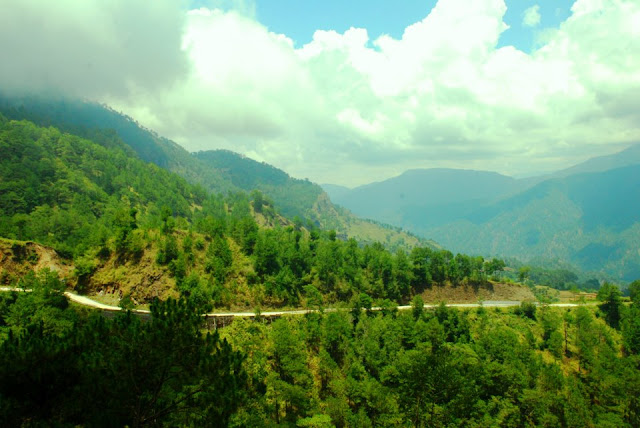 |
| Mt Pulag National Park |
Globally, the
mountains are known as the water reservoir for human consumption, weather
makers for most of the world, source of biological diversity, spiritual or
sacred places and recreation sites.
Locally, the
mountains are the source of food, medicinal plants, minerals, timber, fuel
wood, hydro electricity and labor. It is the sanctuary of plants and animals,
used as farmlands, pasture lands, resorts, tourism, sports and recreation
areas, hunting and many more. But one thing sure important to a mountain in
this planet is its role in storing the most precious element in life, the fresh
water.
But when the
mountain forest is unsustainably cut, cleared for commercial farming, mining,
dams, the normal flow of water will cause floods, erosion and landslides.
Water springs will dry up and its biodiversity will be greatly affected.
To date, people
living in the mountains around the world are experiencing deforestation because
of extractive land use or industries such as mining, logging, nontraditional
farming and grazing. Overpopulation is also culprit to its landscape
instability. The loss of our forest
cover contributes to the
massive release of greenhouse gases that exacerbates global warming.
During our high school and college days up to the time of our employment, we had numerous tree planting sessions. Government agencies were engrossed to tree planting programs but these programs were wasted since there was no maintenance system for the trees planted. Coordination to the community or to the concerned environmental custodians was ignored. The planted trees if not taken cared until they are self sufficient are futile since they are exposed to natural nuisance such as forest fires, animals, uncontrolled weeds, improper planting techniques, unseasonal planting and extreme weather events.
But for most of the reforestation
projects, its failure is due to conflicting government policies. The
projects cannot be fully implemented due to systemic graft and corruption. The
best approach is to encourage community participation and strengthen the indigenous
forest management system.
A self-initiated resource management is also appropriate for conservation. This refers to initiatives done outside the conventional “project-type” of intervention or with very little interference from external agencies. The concerned community or the IPs, mostly initiates them using their rich indigenous knowledge, to cope with the changing environment. In the Cordillera’s, there are indigenous forest management practices such as the keyowan of Ibalois or Kaewan to the Kankane-eys of Benguet Province, muyong of the Ifugaos, tayan of Bontoc or batangan to Sagada in Mt. Province, and pirahwa of Tulgao and Tinglayan in Kalinga. Traditional management practices have also been documented among the Maranaos of Lanoa del Sur. These include their indigenous protection and management of common property resources such as land, forest and water bodies, and native fishing practices using their traditional fishing equipments. Similarly, the Matigsalogs of Bukidnon, Cotabato, and Davao are known to practice environmentally-friendly resource management practices such as those involved in upland farming, hunting and trapping, and inland fishing activities (ILO, 1998).
Documentation of
self-initiated resource management practices has revealed their positive
impacts to human lives and natural resource conservation. Among the cited impacts of these practices
are in-depth understanding of intricate way of life, contribution to
sustainable survival, contribution to cultural preservation and ethnic groups,
and biodiversity conservation (ILO, 1998).
However, while some of their dynamic nature maybe continuously modified
for the better, most are in the process of disappearance (if not already
disappeared) because of the strong forces of modernization.
The adoption, institutionalization, and operationalization of these indigenous forest management systems could be a remarkable contribution of the indigenous people to the climate change. ( )


























